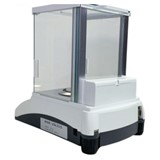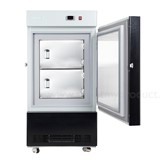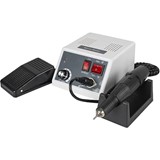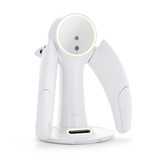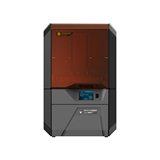Discover how Australian dentists finance big-ticket equipment with chattel mortgages, low-doc loans, and leasing options. Understand approval times, lender criteria, and how to prepare for fast, smooth approval.
Key takeaways
- Loan amounts typically range from $10,000 to $500,000 for dental equipment purchases in Australia, depending on the type and brand of equipment.
- Approval times vary from 48 hours to 2 weeks, but preparing the right documents in advance can significantly speed up the process.
- Lenders assess practice financials, credit history, and business structure before offering terms.
- Low-doc options are available, but come with higher interest rates (typically 10%+).
- Tax-deductible leasing and chattel mortgage options are commonly used in dental practices.
- 67% of dental professionals use finance to purchase large equipment.
- Key documents include recent BAS statements, profit & loss summaries, equipment quotes, and ID verification.
Introduction
Financing dental equipment is a common strategy for Australian dental practices wanting to expand, modernise, or replace ageing machines. With equipment like cone beam CTs, dental chairs, intraoral scanners, and sterilisation units costing tens or even hundreds of thousands of dollars, a well-prepared loan application can make all the difference.
This guide walks you through exactly how to prepare for a dental equipment loan application in Australia — from understanding what lenders look for to organising your financials for a smooth, fast approval.
Why financing dental equipment makes sense
Dental equipment financing offers a way to spread large capital costs over time while maintaining cash flow. For most dental practices, the return on investment from new equipment — such as increased throughput, reduced maintenance downtime, or better diagnostic capability — can outweigh the cost of borrowing.
Key benefits of financing include:
- Preserve working capital: Avoid upfront outlays that drain your operational budget.
- Flexible structures: Choose from leases, chattel mortgages, or equipment loans.
- Potential tax advantages: Claim GST upfront and depreciation on financed assets.
- Faster tech upgrades: Stay ahead with the latest diagnostic and treatment tools.
What lenders look for in dental equipment finance applications
Understanding what lenders assess will help you package your application more effectively. While each lender has slightly different requirements, most evaluate these core criteria:
1. Business history and structure
- Time in operation: Most lenders prefer practices trading for 12+ months. New practices may require personal guarantees or higher deposits.
- Legal structure: Sole trader, partnership, company, or trust — documentation will vary slightly.
2. Financial position
- Profitability and turnover: Lenders typically want to see stable revenue and margins.
- BAS and tax returns: These show your real financial health.
- Cash flow management: Late payments, debt load, or overdrawn accounts can be red flags.
3. Credit history
- Business and personal credit score: Defaults or judgments can reduce approval chances.
- Director credit check: Especially for new practices or where the loan is personally guaranteed.
4. Equipment details
- Brand, model and price: Lenders want a formal supplier quote and asset description.
- New vs used: New assets often attract better terms; used equipment may require an independent valuation.
Step-by-step: How to prepare for your loan application
Being proactive with documentation and financial organisation can dramatically improve your approval speed and outcome.
Step 1: Get a formal quote from the supplier
- Include make, model, serial numbers (if available), and exact pricing.
- Mention any additional costs (delivery, installation, training).
Step 2: Gather your financial statements
- Latest business activity statements (BAS) – 2 quarters minimum
- Profit & loss and balance sheet – ideally 12 months
- Tax returns (business and director/guarantor if required)
Step 3: Verify your identity and business structure
- Director/owner photo ID (driver’s licence or passport)
- Australian Business Number (ABN) or Australian Company Number (ACN)
- Trust deed or partnership agreement if applicable
Step 4: Clean up your financial position
- Settle any overdue tax liabilities or loans
- Ensure all your financials are up to date
- Consider paying off minor debts to improve your debt-to-income ratio
Step 5: Choose the right finance structure
- Chattel mortgage – Own the asset upfront, claim GST and depreciation.
- Finance lease – Fixed term with potential to buy at the end.
- Operating lease/rental – Off-balance-sheet option with flexibility.
Discuss with your accountant which model suits your practice best.
Step 6: Work with a broker or lender who understands dental practices
- Dental-focused lenders are more likely to understand your needs.
- A broker can compare offers and negotiate better terms on your behalf.
Tips to improve approval odds and terms
- Maintain a clean credit record – pay suppliers and lenders on time.
- Bundle equipment – apply for multiple items in a single loan for simplicity.
- Apply during periods of strong cash flow – timing matters.
- Be transparent – provide complete, accurate financials.
- Demonstrate ROI – explain how the equipment will increase patient throughput or revenue.
Common loan structures for dental equipment in Australia
- Loan terms typically range from 3 to 7 years.
- Interest rates vary between 6% and 11% depending on credit risk and structure.
- Low-doc options available for strong credit practices but may require higher rates or deposits.
- Balloon payments can reduce monthly outgoings but must be planned for at end-of-term.
Warranties, insurance and compliance
While not directly part of the loan, these areas are often required as part of your lender’s risk assessment.
- Warranty coverage: Lenders may request minimum warranty terms (usually 12–24 months).
- Equipment insurance: Mandatory for most loans. Cover against damage, theft, and breakdown.
- Compliance: Equipment must meet Australian standards (e.g. TGA listing for medical devices).
FAQs: How to prepare for a dental equipment loan application
How much can I borrow for dental equipment?
You can typically borrow from $10,000 up to $500,000 or more, depending on your business financials and creditworthiness. Some lenders offer 100% financing including installation and training costs.
What credit score do I need to get approved?
While there’s no fixed minimum, a business credit score above 500 and a clean personal credit history improve your chances. Defaults, judgments, or recent bankruptcies are likely to result in rejection.
Can I get a loan if I’m starting a new practice?
Yes, but expect to provide more documentation. You may need to show a business plan, cash flow forecasts, and possibly secure the loan with personal guarantees or property.
Do I need a deposit?
Not always. Many lenders offer 100% no-deposit finance for dental professionals, especially for new equipment purchases from reputable suppliers.
How long does approval take?
If you have all documents ready, approvals can happen in as little as 48–72 hours. Complex or new-practice applications may take 1–2 weeks.
Is dental equipment finance tax deductible?
Yes. Interest and depreciation on financed assets may be deductible. Under a chattel mortgage, you can often claim GST upfront on your BAS. Always confirm with your accountant.
What happens at the end of the loan term?
Depending on your structure:
- Chattel mortgage: You own the asset.
- Finance lease: Option to buy it at a residual value.
- Operating lease: Return the equipment or renew lease.
Final thoughts
Preparing for a dental equipment loan application is about more than paperwork — it’s about presenting your practice as a low-risk, high-value borrower. With the right documentation, financial hygiene, and lender relationships, you can secure funding faster and get back to focusing on what matters: your patients.
Make sure to engage your accountant and consider working with a finance broker who understands the dental sector. With 67% of Australian dental professionals using finance to invest in their practice, you're in good company — and a well-prepared application will set you up for success.





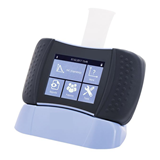




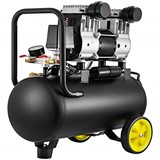


-160x160-state_article-rel-cat.png)



